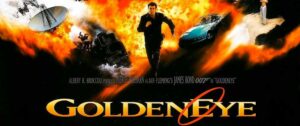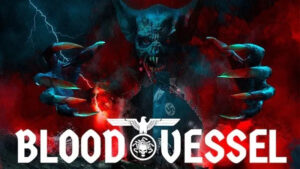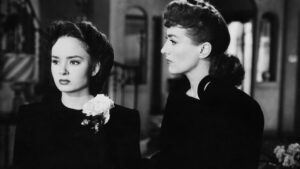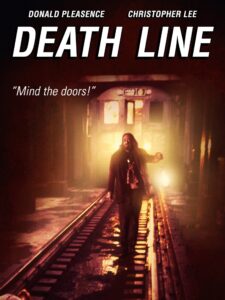Italian Director and Cinematographer Mario Bava, best known for
giallofilms such as
Blood and Black Lace and horror movies like
Black Sunday, in 1965 released the stylish is somewhat misnamed science-fiction horror film
Planet of the Vampires.
A pair of spaceships, the Argos and the Galliott arrive at the planet Aura investigating signals that may signify intelligent life. When the ships, after being unable to observe the plant’s surface due to a constant impenetrable could layer, attempt to land they are subjected to a mysterious increased in gravity that renders all of the crew except for the Argos’ commander Mark (Barry 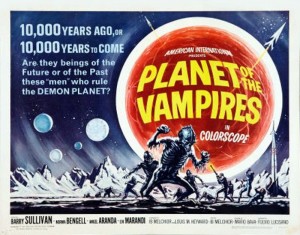 Sullivan) unconscious. As quickly as it arrived the mysterious forces dissipates the Argos lands perfectly but when the crew awake, they are overtaken by violent impulses and nearly kill each other. With their wits gathered the Commander must locate and rescue the Galliott and discover the terrifying secret of planet Aura before everyone is killed by the planet’s mysterious force.
Sullivan) unconscious. As quickly as it arrived the mysterious forces dissipates the Argos lands perfectly but when the crew awake, they are overtaken by violent impulses and nearly kill each other. With their wits gathered the Commander must locate and rescue the Galliott and discover the terrifying secret of planet Aura before everyone is killed by the planet’s mysterious force.
I first saw Planet of the Vampires, and there are no traditional vampires anywhere in the story, when I was a young teenager. A late night ‘creature feature’ broadcast the film, particularly its ending, stayed with me from the 70s through the 2000s when I obtained first a DVD and then later a Blu-ray release. While the characters are threadbare serving plot rather than dramatic functions the film is immensely stylish and unforgettable in its beautiful cinematography. All the more impressive when it’s known that the entire budget was less than that of two episodes the original Star Trek series. There are very few optical effects in the film with most of the ‘special effects’ captured in-camera and yet quite credible and lovely. Set design, though impractical for an actual starship, is modern, for the mid-60s, and immersive.
It’s difficult to accurately judge the acting of the movie. Planet of the Vampires was produced in the International Style used by many Italian productions of the period where the multinational cast all delivered their lines in their native languages, often without know what the other characters were actually saying, and then the rest of the cast would be dubbed into various language for other markets.
Based on an Italian SF short story One night of 21 hours the movie’s ending, which I will not spoil here, is one of the scenes that managed to stay stuck in my memory over the decades. Even during the years when the film’s title had faded from recall the ending remained.
This film is not to everyone’s taste, you must be able to accept style over plausibility, but if you do you will be rewarded.
Planet of the Vampires is currently streaming on Amazon Prime.
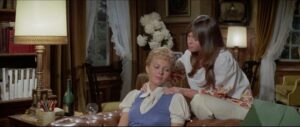 terror that when it rains causes her to turn violent stabbing everything in sight. Halfway through the film’s running time we are told that there are unsolved vicious murders in a 100-kilometer radius around the village and Ruth and Chris apparently leap to the conclusion that it’s likely Barney that is the culprit.
terror that when it rains causes her to turn violent stabbing everything in sight. Halfway through the film’s running time we are told that there are unsolved vicious murders in a 100-kilometer radius around the village and Ruth and Chris apparently leap to the conclusion that it’s likely Barney that is the culprit.

